 A former fruit picker and cowboy, the guitar-strumming Rogers—born Leonard Franklin Slye—began his musical career in the 1930s as a radio performer. He later founded the Sons of the Pioneers, a singing trio that began appearing in movies in 1935, and soon succeeded Gene Autry as America’s favorite singing cowboy in movies of the mid-1940s. Rogers appeared in dozens of B movies with his wife, Dale Evans, and his famous horse, Trigger. What was the theme song of their television program? Discuss
A former fruit picker and cowboy, the guitar-strumming Rogers—born Leonard Franklin Slye—began his musical career in the 1930s as a radio performer. He later founded the Sons of the Pioneers, a singing trio that began appearing in movies in 1935, and soon succeeded Gene Autry as America’s favorite singing cowboy in movies of the mid-1940s. Rogers appeared in dozens of B movies with his wife, Dale Evans, and his famous horse, Trigger. What was the theme song of their television program? Discuss
Source: The Free Dictionary
 Rogers was an American humorist and actor. A cowboy in his youth, Rogers traveled the world before returning to the US to perform in vaudeville and Wild West shows as a rider and trick roper. The “cowboy philosopher’s” homespun wit and salty commentary on current political and social events soon earned him a following through movies, books, radio, and a syndicated newspaper column. A champion of airplane travel, Rogers made several long plane trips, but died in a crash with what famous aviator?
Rogers was an American humorist and actor. A cowboy in his youth, Rogers traveled the world before returning to the US to perform in vaudeville and Wild West shows as a rider and trick roper. The “cowboy philosopher’s” homespun wit and salty commentary on current political and social events soon earned him a following through movies, books, radio, and a syndicated newspaper column. A champion of airplane travel, Rogers made several long plane trips, but died in a crash with what famous aviator? 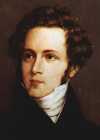 Bellini was an Italian composer who was born into a musical family and began composing in his childhood. He wrote his first opera at age 24 and went on to complete nine more before his death at age 33. His most celebrated works, which rely strongly on beautiful vocal melody and include the operas Norma and La Sonnambula—Italian for “The Sleepwalker”—greatly influenced the work of Giuseppe Verdi. According to legend, what musical feat could Bellini perform at just 18 months of age?
Bellini was an Italian composer who was born into a musical family and began composing in his childhood. He wrote his first opera at age 24 and went on to complete nine more before his death at age 33. His most celebrated works, which rely strongly on beautiful vocal melody and include the operas Norma and La Sonnambula—Italian for “The Sleepwalker”—greatly influenced the work of Giuseppe Verdi. According to legend, what musical feat could Bellini perform at just 18 months of age? 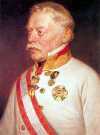 Radetzky was an Austrian army officer. After fighting with distinction against the French in the Napoleonic Wars, he became chief of staff and attempted to modernize the Austrian army. As commander in chief of the Austrian army in northern Italy in 1848—in his eighties at the time—he suppressed a revolt in the Austrian-ruled provinces of Lombardy and Venetia, where he later served as governor-general. His status as a national hero inspired what famous composer to name a march in his honor?
Radetzky was an Austrian army officer. After fighting with distinction against the French in the Napoleonic Wars, he became chief of staff and attempted to modernize the Austrian army. As commander in chief of the Austrian army in northern Italy in 1848—in his eighties at the time—he suppressed a revolt in the Austrian-ruled provinces of Lombardy and Venetia, where he later served as governor-general. His status as a national hero inspired what famous composer to name a march in his honor? 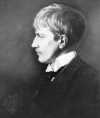 Often classified as the first modern American writer, Crane was among the first to introduce realism into American literature. He achieved international fame with his masterwork, The Red Badge of Courage, which depicts the psychological turmoil of a young Civil War soldier. While traveling as a war correspondent, Crane survived a shipwreck and ended up adrift in a dinghy. This ordeal inspired him to write the acclaimed story “The Open Boat.” What took his life when he was just 28?
Often classified as the first modern American writer, Crane was among the first to introduce realism into American literature. He achieved international fame with his masterwork, The Red Badge of Courage, which depicts the psychological turmoil of a young Civil War soldier. While traveling as a war correspondent, Crane survived a shipwreck and ended up adrift in a dinghy. This ordeal inspired him to write the acclaimed story “The Open Boat.” What took his life when he was just 28? 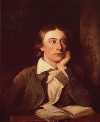 Considered one of the greatest English poets, Keats worked as a surgeon’s apprentice before devoting himself entirely to poetry at age 21. During a few intense months in 1819, he produced many of his greatest works, including “Ode on a Grecian Urn,” “Ode to a Nightingale,” and “To Autumn.” His Lamia, Isabella, The Eve of St. Agnes, and Other Poems is perhaps the greatest single volume of poetry published in England in the 19th century. Tragically, Keats died at just 25 from what disease?
Considered one of the greatest English poets, Keats worked as a surgeon’s apprentice before devoting himself entirely to poetry at age 21. During a few intense months in 1819, he produced many of his greatest works, including “Ode on a Grecian Urn,” “Ode to a Nightingale,” and “To Autumn.” His Lamia, Isabella, The Eve of St. Agnes, and Other Poems is perhaps the greatest single volume of poetry published in England in the 19th century. Tragically, Keats died at just 25 from what disease? 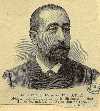 Tourette syndrome is a rare neurological disease characterized by repetitive tics, movement disorders, uncontrolled grunts, and, occasionally, verbal obscenities. It is named for French neurologist Georges Gilles de la Tourette, who first described it in the 1880s. Apart from his clinical work, Tourette lectured on a variety of topics, including the medical and legal ramifications of mesmerism, now called hypnosis. In the 1890s, one of Tourette’s former patients shot him in the head. Why?
Tourette syndrome is a rare neurological disease characterized by repetitive tics, movement disorders, uncontrolled grunts, and, occasionally, verbal obscenities. It is named for French neurologist Georges Gilles de la Tourette, who first described it in the 1880s. Apart from his clinical work, Tourette lectured on a variety of topics, including the medical and legal ramifications of mesmerism, now called hypnosis. In the 1890s, one of Tourette’s former patients shot him in the head. Why? 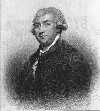 Boswell was a Scottish lawyer and author who is best known for his biography of English literary scholar and critic Samuel Johnson, a noted wit. Boswell’s record of Johnson’s pithy remarks earned The Life of Samuel Johnson, LL.D. recognition as one of the greatest biographies of Western literature. So skillful was his work that Johnson is perhaps better remembered for his sayings in the biography than for his own writings. What Boswell manuscripts were discovered in the 20th century?
Boswell was a Scottish lawyer and author who is best known for his biography of English literary scholar and critic Samuel Johnson, a noted wit. Boswell’s record of Johnson’s pithy remarks earned The Life of Samuel Johnson, LL.D. recognition as one of the greatest biographies of Western literature. So skillful was his work that Johnson is perhaps better remembered for his sayings in the biography than for his own writings. What Boswell manuscripts were discovered in the 20th century? 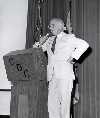 Salk was an American physician and microbiologist renowned for his work in developing the first vaccine against polio. He began his groundbreaking studies on viruses and immunization with the influenza virus. Later, while working with other scientists to classify the poliovirus, he confirmed earlier studies that identified three strains, and he showed that the killed virus of each strain could induce antibody formation without producing disease. Who owned the patent for Salk’s vaccine?
Salk was an American physician and microbiologist renowned for his work in developing the first vaccine against polio. He began his groundbreaking studies on viruses and immunization with the influenza virus. Later, while working with other scientists to classify the poliovirus, he confirmed earlier studies that identified three strains, and he showed that the killed virus of each strain could induce antibody formation without producing disease. Who owned the patent for Salk’s vaccine? 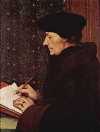 Considered the greatest European scholar of the 16th century, Erasmus was a Dutch priest and leading humanist of the Renaissance era. After his ordination in the early 1490s, Erasmus traveled throughout Europe and became acquainted with many scholars, including Thomas More. A prolific writer, he was noted for his editions of classical works as well as the first Greek edition of the New Testament. Who placed all of Erasmus’s works on a list of prohibited books?
Considered the greatest European scholar of the 16th century, Erasmus was a Dutch priest and leading humanist of the Renaissance era. After his ordination in the early 1490s, Erasmus traveled throughout Europe and became acquainted with many scholars, including Thomas More. A prolific writer, he was noted for his editions of classical works as well as the first Greek edition of the New Testament. Who placed all of Erasmus’s works on a list of prohibited books?